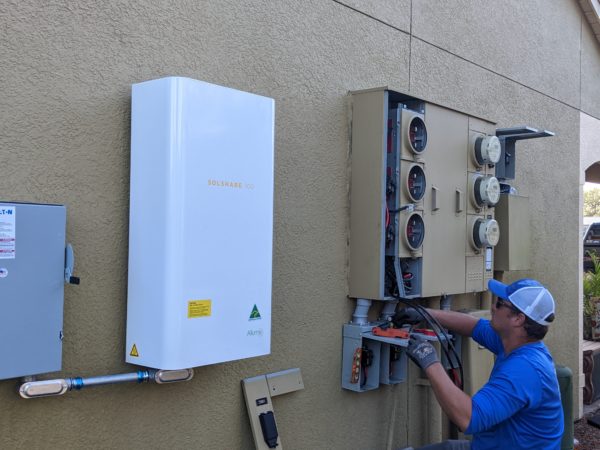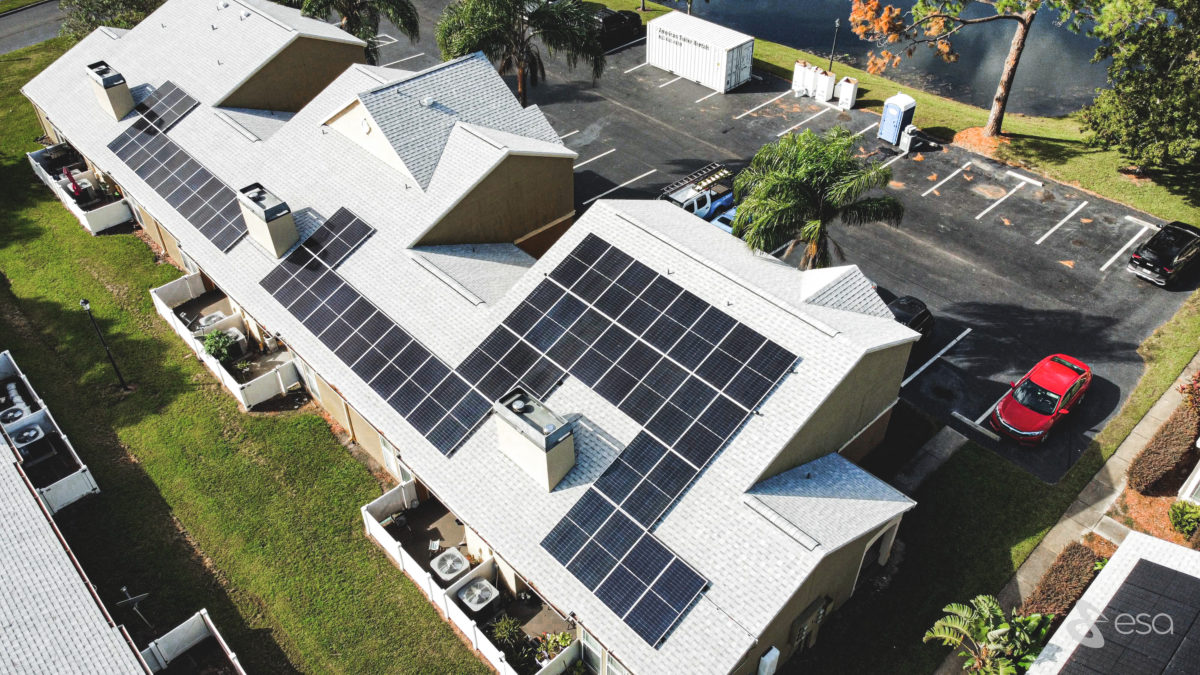SolShare’s first behind-the-meter shared solar system in the U.S. was brought online this week at an apartment complex in Orlando, Fla.
Allume Energy, RENU Communities, and ESA Solar announced the successful commissioning of a solar installation that will generate renewable electricity for the 296-unit apartment complex, Canopy Apartment Villas. The 165 kW DC rooftop solar was installed in two phases on 12 buildings.
ESA Solar designed and developed the entire project and served as installer on phase 1. Local installer Castaways completed phase 2.
The system uses the SolShare technology, which enables residents in 65 of the apartment units to subscribe to a portion of the solar energy produced on the roof, offsetting the cost of their individual electricity bills.

Image: Allume
SolShare is hardware developed by Australian-born, California-based Allume Energy, and is designed specifically for sharing rooftop solar to apartments without requiring tenants to sign up for additional billing services or solar trading platforms. It sits behind the meter and logs the amount of solar delivered to each apartment and, over the course of each month, ensures that the connected units each receive the same amount of solar.
The solar project at Canopy is the first asset within the recently announced environmental, social, and governance (ESG)-centric venture between Taurus Investment Holdings, LLC and Aegon Asset Management. Using RENU, Taurus’ sustainable retrofit subsidiary, the partnership will acquire multifamily assets with the goal of reducing the energy consumption and carbon output of those assets. RENU aims to deliver clean energy retrofits to existing real estate assets.
The installation at Canopy will contribute to the City of Orlando’s goal of generating net-zero energy by 2050, which was set in 2017. The Orlando Utilities Commission worked with Allume, RENU and ESA Solar to review and ensure this first-of-its-kind system for Florida met its interconnection and safety requirements.
“Because Orlando is one of the fastest growing cities in Florida, it needs to develop affordable housing solutions that also prioritize energy efficiency and sustainability,” said Morgan Brawner, ESA Solar’s vice president of business development.
By 2025, the Orlando Utilities Commission’s (OUC) solar energy capacity is projected to produce 496 MW of renewable energy, enough for 90,000 Floridian homes. The OUC has committed $420 million to increasing its solar generating capacity, which will include the opening of two, 74.5 MW solar farms in 2024, according to a December news release.
This content is protected by copyright and may not be reused. If you want to cooperate with us and would like to reuse some of our content, please contact: editors@pv-magazine.com.









By submitting this form you agree to pv magazine using your data for the purposes of publishing your comment.
Your personal data will only be disclosed or otherwise transmitted to third parties for the purposes of spam filtering or if this is necessary for technical maintenance of the website. Any other transfer to third parties will not take place unless this is justified on the basis of applicable data protection regulations or if pv magazine is legally obliged to do so.
You may revoke this consent at any time with effect for the future, in which case your personal data will be deleted immediately. Otherwise, your data will be deleted if pv magazine has processed your request or the purpose of data storage is fulfilled.
Further information on data privacy can be found in our Data Protection Policy.